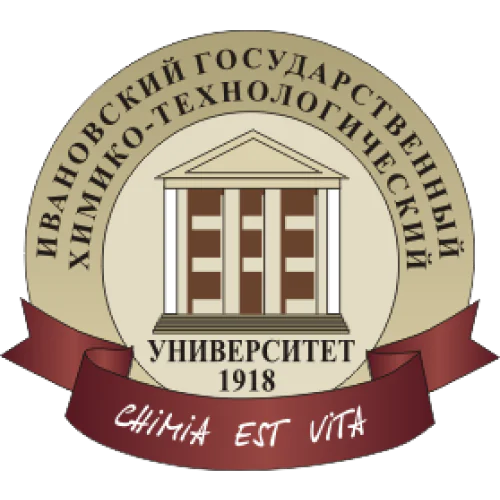Colloids and Surfaces B: Biointerfaces, volume 216, pages 112532
Spanning BODIPY fluorescence with self-assembled micellar clusters.
Solomonov Alexey V.
1
,
Marfin Yuriy S.
2
,
Tesler Alexander
3
,
Merkushev Dmitry A
2
,
Bogatyreva Elizaveta A
2
,
Antina Elena V
4
,
Rumyantsev E.V.
2, 5
,
Shimanovich Ulyana
1
3
Department of Materials Science and Engineering, Friedrich-Alexander University Erlangen-Nuremberg, 7 Martensstrasse, Erlangen 91056 Germany
|
Publication type: Journal Article
Publication date: 2022-08-01
Quartile SCImago
Q1
Quartile WOS
Q1
Impact factor: 5.8
ISSN: 09277765, 18734367
Physical and Theoretical Chemistry
General Medicine
Colloid and Surface Chemistry
Biotechnology
Surfaces and Interfaces
Abstract
BODIPY dyes possess favorable optical properties for a variety of applications including in vivo and in vitro diagnostics. However, their utilization might be limited by their water insolubility and incompatibility with chemical modifications, resulting in low aggregation stability. Here, we outline the route for addressing this issue. We have demonstrated two approaches, based on dye entrapment in micellar coordination clusters (MCCs); this provides a general solution for water solubility as well as aggregation stability of the seven BODIPY derivatives. These derivatives have various bulky aromatic substituents in the 2,3,5,6- and meso-positions and can rotate relative to a dipyrrin core, which also provides molecular rotor properties. The molecular structural features and the presence of aromatic groups allows BODIPY dyes to be used as "supporting molecules", thus promoting micelle-micelle interaction and micellar network stabilization. In the second approach, self-micellization, following BODIPY use, leads to MCC formation without the use of any mediators, including chelators and/or metal ions. In both approaches, BODIPY exhibits an excellent optical response, at a concentration beyond its solubilization limit in aqueous media and without undesired crystallization. The suggested approaches represent systems used to encapsulate BODIPY in a capsule-based surfactant environment, enabling one to track the aggregation of BODIPY; these approaches represent an alternative system to study and apply BODIPY's molecular rotor properties. The stabilized compounds, i.e., the BODIPY-loaded MCCs, provide a unique feature of permeability to hydrophilic ligand-switching proteins such as BSA; they exhibit a bright "turn-on" fluorescence signal within the clusters via macromolecular complexation, thus expanding the possibilities of water-soluble BODIPY-loaded MCCs utilization for functional indicators.
Citations by journals
|
1
|
|
|
Journal of the American Chemical Society

|

Journal of the American Chemical Society
1 publication, 25%
|
|
Journal of Molecular Liquids

|

Journal of Molecular Liquids
1 publication, 25%
|
|
Dyes and Pigments

|

Dyes and Pigments
1 publication, 25%
|
|
Izvestiya Vysshikh Uchebnykh Zavedenii, Seriya Khimiya i Khimicheskaya Tekhnologiya

|

Izvestiya Vysshikh Uchebnykh Zavedenii, Seriya Khimiya i Khimicheskaya Tekhnologiya
1 publication, 25%
|
|
1
|
Citations by publishers
|
1
2
|
|
|
Elsevier

|

Elsevier
2 publications, 50%
|
|
American Chemical Society (ACS)

|

American Chemical Society (ACS)
1 publication, 25%
|
|
Ivanovo State University of Chemistry and Technology

|

Ivanovo State University of Chemistry and Technology
1 publication, 25%
|
|
1
2
|
- We do not take into account publications that without a DOI.
- Statistics recalculated only for publications connected to researchers, organizations and labs registered on the platform.
- Statistics recalculated weekly.
{"yearsCitations":{"type":"bar","data":{"show":true,"labels":[2023],"ids":[0],"codes":[0],"imageUrls":[""],"datasets":[{"label":"Citations number","data":[4],"backgroundColor":["#3B82F6"],"percentage":["100"],"barThickness":null}]},"options":{"indexAxis":"x","maintainAspectRatio":true,"scales":{"y":{"ticks":{"precision":0,"autoSkip":false,"font":{"family":"Montserrat"},"color":"#000000"}},"x":{"ticks":{"stepSize":1,"precision":0,"font":{"family":"Montserrat"},"color":"#000000"}}},"plugins":{"legend":{"position":"top","labels":{"font":{"family":"Montserrat"},"color":"#000000"}},"title":{"display":true,"text":"Citations per year","font":{"size":24,"family":"Montserrat","weight":600},"color":"#000000"}}}},"journals":{"type":"bar","data":{"show":true,"labels":["Journal of the American Chemical Society","Journal of Molecular Liquids","Dyes and Pigments","Izvestiya Vysshikh Uchebnykh Zavedenii, Seriya Khimiya i Khimicheskaya Tekhnologiya"],"ids":[4813,13597,10101,21625],"codes":[0,0,0,0],"imageUrls":["\/storage\/images\/resized\/iLiQsFqFaSEx6chlGQ5fbAwF6VYU3WWa08hkss0g_medium.webp","\/storage\/images\/resized\/GDnYOu1UpMMfMMRV6Aqle4H0YLLsraeD9IP9qScG_medium.webp","\/storage\/images\/resized\/GDnYOu1UpMMfMMRV6Aqle4H0YLLsraeD9IP9qScG_medium.webp","\/storage\/images\/resized\/PmVbwfUc2aRdrnSFGtkfcabQRXGkjjb14bQC1gcl_medium.webp"],"datasets":[{"label":"","data":[1,1,1,1],"backgroundColor":["#3B82F6","#3B82F6","#3B82F6","#3B82F6"],"percentage":[25,25,25,25],"barThickness":13}]},"options":{"indexAxis":"y","maintainAspectRatio":false,"scales":{"y":{"ticks":{"precision":0,"autoSkip":false,"font":{"family":"Montserrat"},"color":"#000000"}},"x":{"ticks":{"stepSize":null,"precision":0,"font":{"family":"Montserrat"},"color":"#000000"}}},"plugins":{"legend":{"position":"top","labels":{"font":{"family":"Montserrat"},"color":"#000000"}},"title":{"display":true,"text":"Journals","font":{"size":24,"family":"Montserrat","weight":600},"color":"#000000"}}}},"publishers":{"type":"bar","data":{"show":true,"labels":["Elsevier","American Chemical Society (ACS)","Ivanovo State University of Chemistry and Technology"],"ids":[17,40,675],"codes":[0,0,0],"imageUrls":["\/storage\/images\/resized\/GDnYOu1UpMMfMMRV6Aqle4H0YLLsraeD9IP9qScG_medium.webp","\/storage\/images\/resized\/iLiQsFqFaSEx6chlGQ5fbAwF6VYU3WWa08hkss0g_medium.webp","\/storage\/images\/resized\/PmVbwfUc2aRdrnSFGtkfcabQRXGkjjb14bQC1gcl_medium.webp"],"datasets":[{"label":"","data":[2,1,1],"backgroundColor":["#3B82F6","#3B82F6","#3B82F6"],"percentage":[50,25,25],"barThickness":13}]},"options":{"indexAxis":"y","maintainAspectRatio":false,"scales":{"y":{"ticks":{"precision":0,"autoSkip":false,"font":{"family":"Montserrat"},"color":"#000000"}},"x":{"ticks":{"stepSize":null,"precision":0,"font":{"family":"Montserrat"},"color":"#000000"}}},"plugins":{"legend":{"position":"top","labels":{"font":{"family":"Montserrat"},"color":"#000000"}},"title":{"display":true,"text":"Publishers","font":{"size":24,"family":"Montserrat","weight":600},"color":"#000000"}}}}}
Metrics
Cite this
GOST |
RIS |
BibTex
Cite this
GOST
Copy
Solomonov A. V. et al. Spanning BODIPY fluorescence with self-assembled micellar clusters. // Colloids and Surfaces B: Biointerfaces. 2022. Vol. 216. p. 112532.
GOST all authors (up to 50)
Copy
Solomonov A. V., Marfin Y. S., Tesler A., Merkushev D. A., Bogatyreva E. A., Antina E. V., Rumyantsev E., Shimanovich U. Spanning BODIPY fluorescence with self-assembled micellar clusters. // Colloids and Surfaces B: Biointerfaces. 2022. Vol. 216. p. 112532.
Cite this
RIS
Copy
TY - JOUR
DO - 10.1016/j.colsurfb.2022.112532
UR - https://doi.org/10.1016%2Fj.colsurfb.2022.112532
TI - Spanning BODIPY fluorescence with self-assembled micellar clusters.
T2 - Colloids and Surfaces B: Biointerfaces
AU - Solomonov, Alexey V.
AU - Marfin, Yuriy S.
AU - Tesler, Alexander
AU - Merkushev, Dmitry A
AU - Bogatyreva, Elizaveta A
AU - Antina, Elena V
AU - Rumyantsev, E.V.
AU - Shimanovich, Ulyana
PY - 2022
DA - 2022/08/01 00:00:00
PB - Elsevier
SP - 112532
VL - 216
SN - 0927-7765
SN - 1873-4367
ER -
Cite this
BibTex
Copy
@article{2022_Solomonov,
author = {Alexey V. Solomonov and Yuriy S. Marfin and Alexander Tesler and Dmitry A Merkushev and Elizaveta A Bogatyreva and Elena V Antina and E.V. Rumyantsev and Ulyana Shimanovich},
title = {Spanning BODIPY fluorescence with self-assembled micellar clusters.},
journal = {Colloids and Surfaces B: Biointerfaces},
year = {2022},
volume = {216},
publisher = {Elsevier},
month = {aug},
url = {https://doi.org/10.1016%2Fj.colsurfb.2022.112532},
pages = {112532},
doi = {10.1016/j.colsurfb.2022.112532}
}
Profiles
